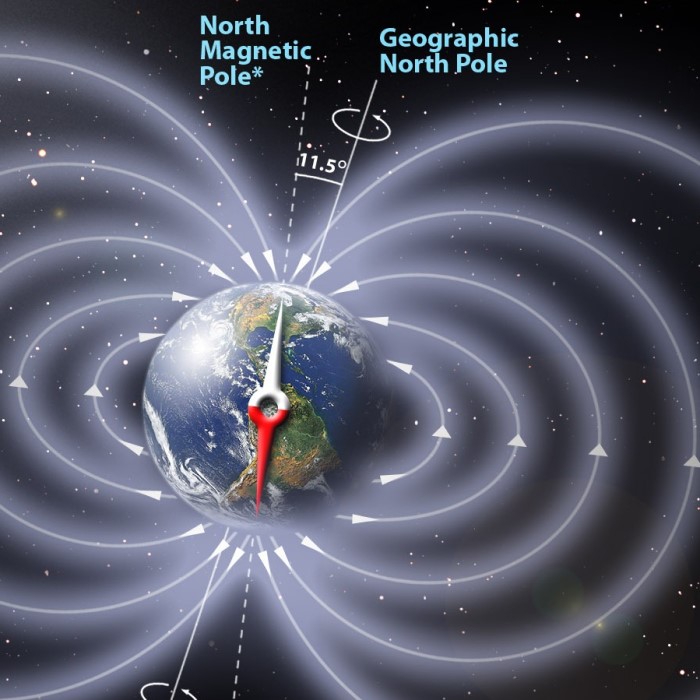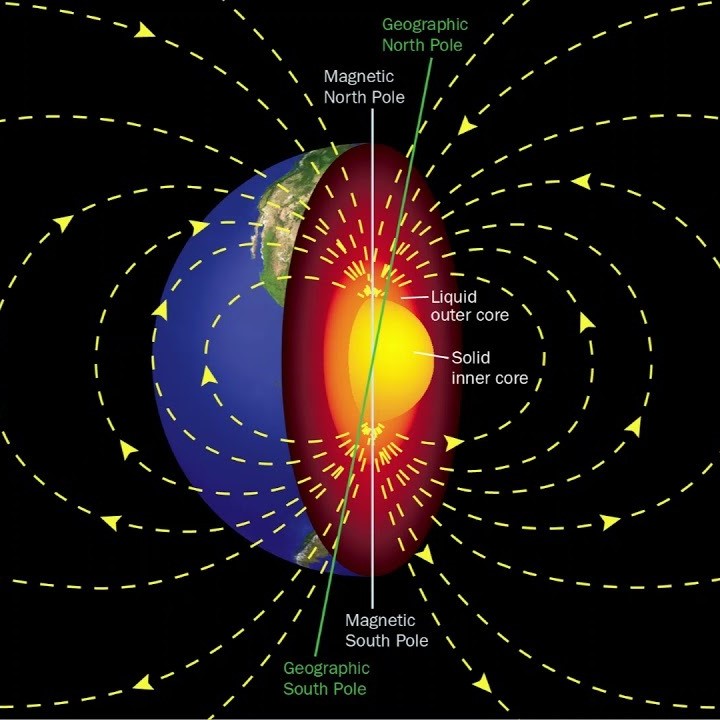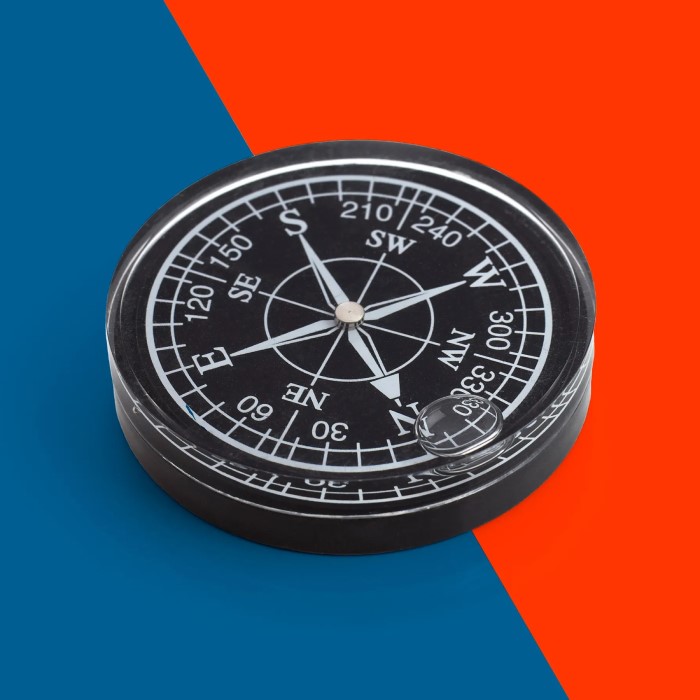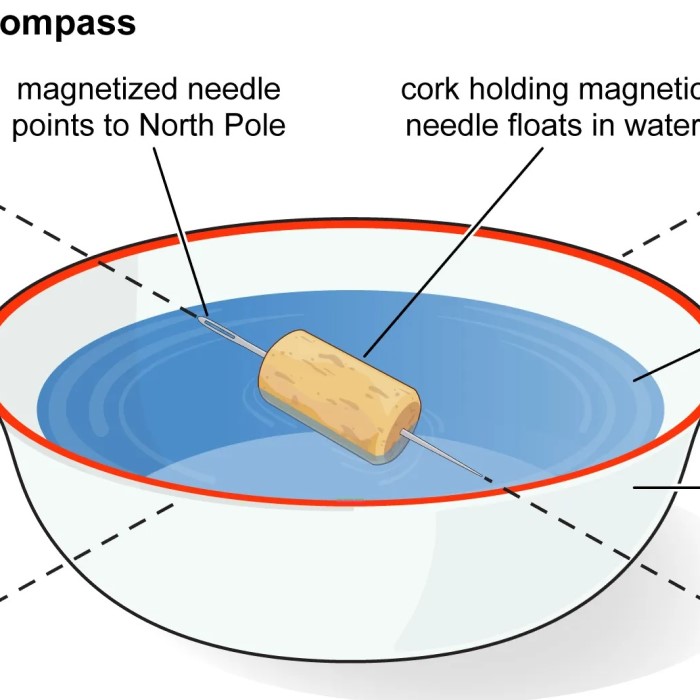Introduction to Compasses and Direction
Compasses have been invaluable tools for navigation throughout history. If you’ve ever wondered why do compasses point north, you’re not alone. This question relates to fundamental concepts in Earth sciences and magnetism. Compasses point north due to magnetic forces generated by Earth’s core. In this article, we will dive deep into the science behind compasses, exploring how they work, the Earth’s magnetic field, and their practical applications in navigation.

The Science Behind Magnetic Fields
Why do compasses point north? Magnetic fields play a vital role in guiding the compass needle. Earth’s magnetic field is a fascinating phenomenon that drives this alignment. Understanding its formation and influence helps explain why compasses point north.
What Causes Earth’s Magnetic Field?
Earth’s magnetic field is generated deep inside its core. The outer core, made of molten iron and nickel, experiences constant movement. These movements create electric currents, which produce the magnetic field. Scientists call this process the geodynamo effect.
The field isn’t static—it changes over time. Its strength and polarity fluctuate due to variations in core dynamics. The magnetic poles can even reverse, switching the north and south positions. Despite these changes, the field remains crucial for navigation.
How Earth?s Magnetic Field Influences the Compass Needle
A compass needle aligns with Earth’s magnetic field lines. These lines form loops from the magnetic north to the south pole. The needle’s tip always points toward Earth’s magnetic north due to magnetism.
Ferromagnetic materials in the compass needle interact directly with the magnetic field. This interaction creates sufficient force to rotate the needle into alignment. Earth’s magnetic field ensures consistent and reliable navigation across the globe.
In regions with magnetic anomalies, compass readings can vary. Understanding these influences can help avoid navigation errors. Despite occasional deviations, Earth’s magnetic field remains the compass’s guiding force.
North vs. Magnetic North: What’s the Difference?
Earth has two “norths”: Geographic North and Magnetic North. Understanding their differences is key for navigation.
Understanding Geographic North
Geographic North, also called True North, represents the fixed northernmost point of Earth. It is marked by the North Pole, where all longitudinal lines converge. Unlike Magnetic North, Geographic North does not change over time.
Geographic North lies along Earth’s axis of rotation. It is independent of Earth’s magnetic field. This point helps define global positioning systems (GPS) and latitude-longitude navigation. Travelers and maps often rely on True North for precise directions.
Exploring the Concept of Magnetic North
Magnetic North is the point toward which compass needles align. Unlike Geographic North, it shifts constantly due to changes in Earth’s magnetic field. Currently, it lies in the Arctic region but moves over time.
Magnetic North doesn’t align perfectly with Geographic North. The angle of difference is called magnetic declination. This variation depends on your location.
Knowing the gap between Magnetic North and True North is crucial. Accurate navigation often requires adjusting for magnetic declination. Without this step, compass readings can lead to errors when plotting routes.
How Compasses Work
Compasses are simple yet powerful tools that use Earth’s magnetic field for navigation. Understanding how they are designed and function sheds light on why compasses point north.
Anatomy of a Compass
A compass has several key parts:
- Compass Needle: Made of magnetized iron or steel, it points toward Magnetic North.
- Rotating Dial: Marked with the cardinal directions (N, S, E, W) for orientation.
- Baseplate: Provides a flat surface and often includes measurement scales for navigation.
- Housing: Contains the needle and may include liquid for steady movement.
- Direction-of-Travel Arrow: Helps accurately plot courses on maps.
Every element works together to make navigation precise and intuitive.
Mechanics of Compass Alignment
Compasses align due to magnetic forces. Here’s how alignment works:
- Magnetic Needles React to Earth’s Field: The needle rotates to align with magnetic field lines.
- Field Lines Connect North to South Poles: These lines create a natural path for the needle to follow.
- Consistency Ensures Reliable Guidance: Earth’s magnetic field provides stability across most locations.
Compass needles are sensitive to nearby magnetic influences. Objects like metals or magnets can disrupt their function. Ensuring a clear environment helps maintain accuracy.
By understanding the design and alignment mechanics, compasses become even more valuable navigation tools.
History of Compass Usage
Compasses have been essential tools for navigation for centuries. They revolutionized travel and exploration by helping people find their way.
Before compasses, early travelers relied on nature for directions. They used the sun, stars, and landmarks. The North Star was a constant guide for nighttime navigation in the Northern Hemisphere. During the day, the sun’s position helped orient travelers.
However, these methods were not always reliable. Bad weather or cloudy skies could obstruct visibility. This limitation made navigation difficult over long distances or during ocean voyages.
The magnetic compass changed everything. The earliest known magnetic compasses appeared in ancient China during the Han Dynasty (around 2nd century BC). These early devices used lodestone, a naturally magnetized mineral. Lodestone would align itself with Earth’s magnetic field, pointing toward Magnetic North.
Over time, this simple tool spread to other cultures. Mariners, traders, and explorers adopted it to travel greater distances with improved confidence.
Evolution of Compasses in History
The compass evolved significantly from its humble beginnings. In the 11th century, the Chinese improved the design by suspending the lodestone, making it more accurate. By the 12th century, this technology had reached Europe and the Islamic world through trade.
European sailors refined the compass further during the Age of Exploration. They added features like the compass needle, a rotating dial, and a protective housing. These advancements improved durability and usability at sea.
In the 18th and 19th centuries, innovations continued. Liquid-filled compasses stabilized the needle, reducing the effects of vibrations or movement. This design became widely popular for marine travel.
Today, compasses are more sophisticated. Digital and electronic compasses are now integrated into smartphones and GPS devices. Despite technological advances, the traditional magnetic compass remains a durable and reliable backup tool for outdoor enthusiasts and survivalists.
From simple lodestones to advanced digital systems, the compass’s evolution underscores its enduring importance in navigation.
Factors That Can Affect Compass Accuracy
Compasses, though reliable, can sometimes give inaccurate readings. Multiple factors influence their accuracy during use.
Magnetic Anomalies and Interference
Magnetic anomalies occur when Earth’s magnetic field behaves irregularly. These disruptions can alter compass readings.
- Geological Formations: Subsurface rocks containing magnetic minerals can interfere with compass needles.
- Man-Made Structures: Metallic buildings or machinery create magnetic fields that affect compass alignment.
- Electromagnetic Fields: Electronics and power lines emit electromagnetic radiation, which can distort compass functions.
Magnetic anomalies are common in areas with heavy mineral deposits. Travelers should be aware of these regions.
How Local Environment Impacts Compass Function
The surroundings also affect compass function. Various environmental factors can contribute to inaccurate readings.
- Nearby Objects: Metal objects and tools can attract or repel compass needles. Keep them away during navigation.
- Weather Conditions: Extreme magnetic storms caused by solar activity can temporarily disrupt Earth’s magnetic field.
- Human Error: Misaligning the compass or reading it incorrectly can lead to navigation errors.
Knowing local environmental influences helps ensure accurate compass use. Always cross-check readings with maps or GPS when possible.
Understanding these factors allows travelers and adventurers to navigate without surprises. Proper awareness minimizes errors during exploration.
Modern Applications of Compasses
Why do compasses point north? Compasses remain vital tools in the modern world. They serve purposes far beyond basic navigation.
Compasses in Outdoor Exploration
Compasses are essential for outdoor activities and survival. Hikers, campers, and adventurers rely on them for accurate navigation.
- Navigation in Remote Areas: Compasses help travelers explore unknown terrain where GPS signals are weak.
- Emergency Situations: When technology fails, a traditional compass ensures direction and safety.
- Complement to Maps: Combining map reading with a compass ensures proper route planning.
Outdoor enthusiasts value compasses for their simplicity and reliability. They function even in extreme weather or rugged environments.
Integration of Compass Functionality in Technology
Modern technology integrates compass functionality into various devices. These advancements make navigation simpler and more accessible.
Smartphones
Modern smartphones are equipped with a range of sensors, including digital compasses.
These compasses play a crucial role in enhancing location-based applications, such as maps and navigation tools.
By providing accurate directional information, they improve the overall user experience in finding routes and destinations.
The integration of compasses allows users to easily switch between orientations, whether they are walking, driving, or cycling.
Wearable Tech
Devices like smartwatches and fitness trackers have become increasingly popular for health and activity monitoring.
Many of these devices come with built-in compass features that allow users to track their routes while engaging in outdoor activities such as hiking, running, or biking.
The inclusion of a compass ensures that users can navigate more effectively, even in unfamiliar terrains or environments.
This feature promotes safety by helping users maintain their bearings and avoid getting lost during their excursions.
GPS Systems
GPS systems are essential tools for navigation in vehicles and outdoor adventures.
Compasses integrated into these GPS units significantly enhance accuracy, ensuring that users have reliable directional guidance.
This combination allows for better route planning and helps prevent deviations from intended paths, especially in remote or rural areas.
The use of a compass in GPS technology is vital for optimizing travel routes and enhancing the overall navigation experience, particularly in challenging environments.
Drones
Drones have gained popularity for various applications, including photography, surveying, and recreational use.
Many drones are equipped with compasses, which are critical for stabilizing flight and maintaining accurate positioning.
The compass data helps drones determine their orientation and navigate effectively, especially during complex flight maneuvers.
By utilizing compass technology, drone operators can achieve more reliable flight paths, improve safety, and enhance the quality of aerial data collection.
This integration blends traditional compass principles with advanced tech. It ensures accurate navigation while improving user convenience.
The uses of compasses today showcase their adaptability. By supporting outdoor explorers and tech innovation, they remain crucial across industries and hobbies.
Interesting Facts About Earth’s Magnetic Poles
Earth’s magnetic poles are dynamic and constantly changing. They hold fascinating secrets about our planet.
Pole Reversals and Their Impact
Pole reversals are rare yet significant phenomena. During these events, Earth’s magnetic poles switch positions. The North Pole becomes the South Pole, and vice versa.
Scientists call this process geomagnetic reversal. It occurs due to changes in Earth’s core activity. These reversals are not instant but happen gradually over thousands of years.
Pole reversals impact Earth’s magnetic shield. This shield protects the planet from harmful solar radiation. During reversals, the field weakens, which can expose Earth’s surface to higher radiation levels.
Navigation systems relying on Magnetic North also face challenges. Existing tools like compasses need adjustments during reversals. Species relying on magnetic fields for migration may experience disorientation.
Despite possible disruptions, pole reversals are natural and part of Earth’s history. They help researchers learn more about core dynamics and planetary evolution.
Changes in Earth’s Magnetic Field Over Time
Earth’s magnetic field is dynamic and constantly shifting. The poles do not stay fixed in place.
Magnetic North moves at varying speeds. Currently, it shifts by tens of kilometers each year. This movement depends on changes in Earth’s molten outer core.
Field strength also fluctuates. At times, it’s stronger; other times, weaker. These variations affect its ability to shield Earth from solar radiation.
Scientists monitor these changes to update navigation tools. GPS systems and maps must include the shifting position of Magnetic North.
Long-term measurements show large-scale patterns in the field’s evolution. Understanding these patterns helps predict future movements and potential pole reversals.
The study of these changes uncovers vital information about Earth’s inner workings. It ultimately enhances our understanding of the planet’s magnetic behavior.
Conclusion: The Enduring Legacy of Compasses
In conclusion, the question why do compasses point north delves into the fascinating interplay between Earth’s magnetic field and the functionality of compasses. As we have explored, compasses work by aligning their magnetized needles with magnetic forces generated by Earth. Knowing this can enhance our understanding of navigation and exploration.
Whether for historical context or practical navigation today, compasses hold a unique place in our lives. Adapting to modern technology while appreciating the historical significance of compasses enriches our understanding of the world. So, the next time you use a compass, remember the incredible science behind why it points north.








